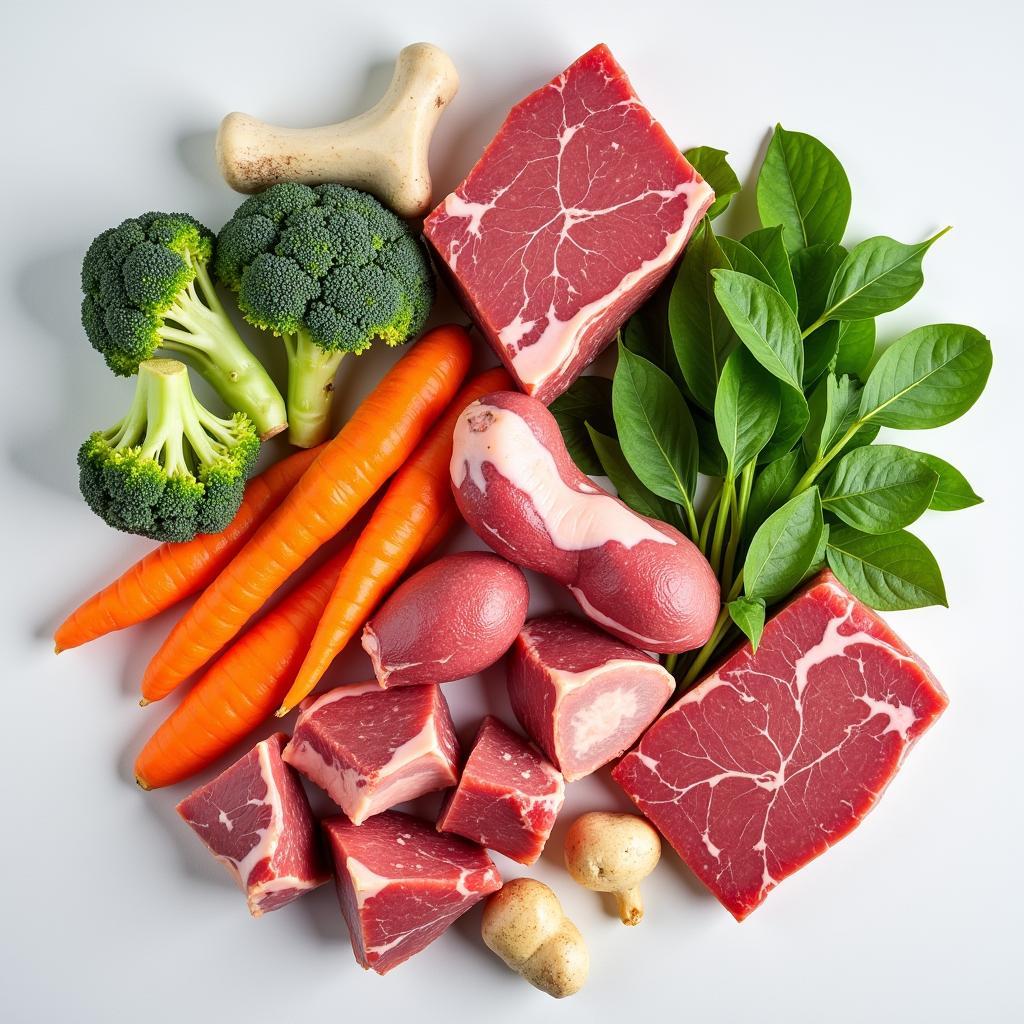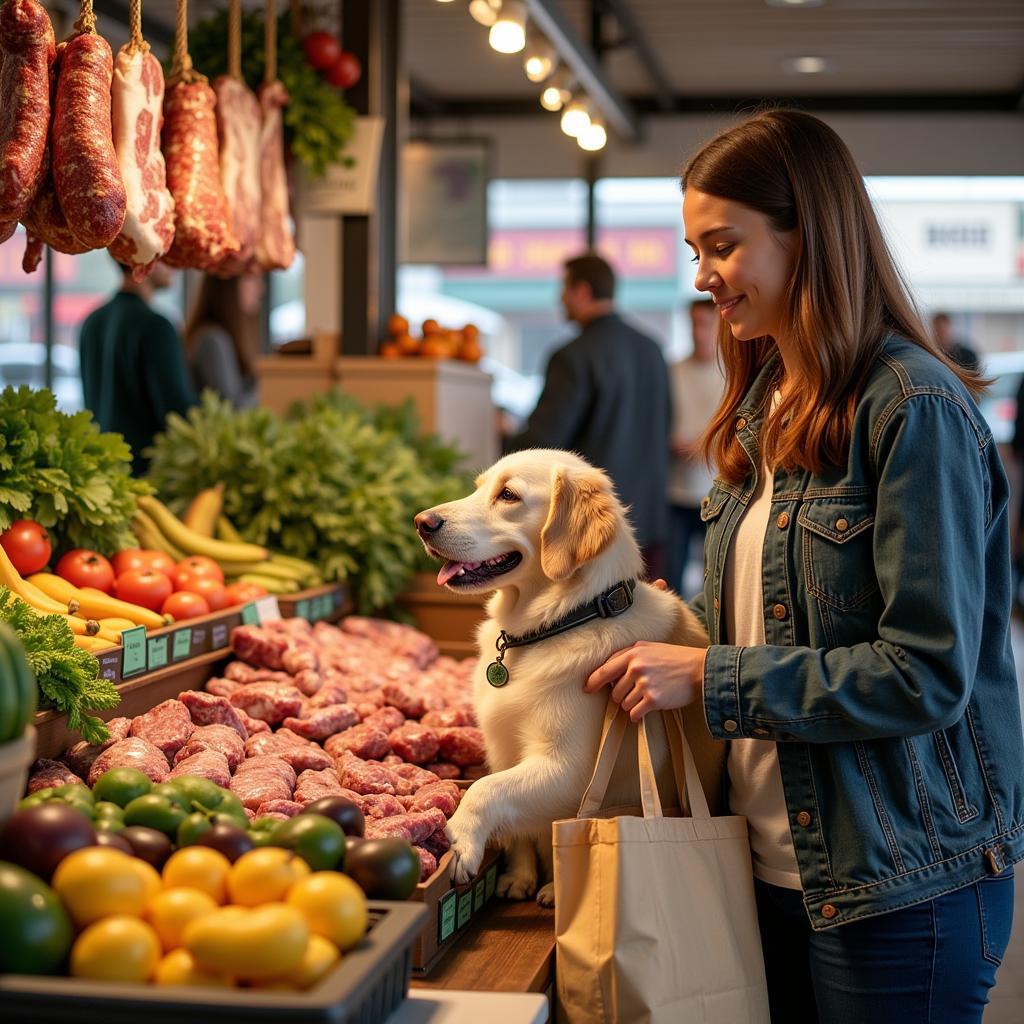Organic Raw Food For Dogs has gained significant popularity among pet owners seeking a natural and holistic approach to canine nutrition. This dietary choice focuses on feeding dogs uncooked, unprocessed foods, primarily meat, bones, organs, vegetables, and fruits, all sourced organically. If you’re curious about transitioning your furry friend to an organic raw diet, this comprehensive guide will equip you with the essential knowledge and resources to make informed decisions. After the initial introduction, we’ll delve into the benefits, potential risks, and practical considerations of incorporating organic raw food into your dog’s meal plan. Let’s embark on this journey toward optimal canine health together!
Understanding the Benefits of Organic Raw Food for Dogs
Organic raw food diets for dogs aim to mimic the natural evolutionary diet of canines. Proponents of this feeding approach believe it offers numerous advantages over conventional commercial kibble. Many report seeing shinier coats, improved dental health, increased energy levels, and firmer stools in their dogs. Furthermore, organic raw food eliminates the risk of exposure to harmful pesticides and herbicides commonly found in conventional produce, contributing to a cleaner and healthier diet. Some pet owners also notice that picky eaters become more enthusiastic about mealtime when offered a variety of fresh, raw ingredients.
You might also find affordable raw food for dogs options, which can help make the transition easier on your budget.
Navigating the Potential Risks of Raw Food Diets for Dogs
While organic raw food diets for dogs offer potential benefits, it’s crucial to be aware of the potential risks involved. Raw meat can harbor harmful bacteria like Salmonella and E. coli, posing a threat to both canine and human health. Careful handling and storage of raw ingredients are paramount to minimize the risk of bacterial contamination. Additionally, nutritional imbalances can occur if the diet isn’t properly formulated. Consulting with a veterinary nutritionist is highly recommended to ensure your dog receives all the necessary nutrients in the correct proportions.
If you’re considering European dog food brands, you might find some that specialize in organic raw options.
 A close-up of fresh, organic ingredients for a raw dog food meal
A close-up of fresh, organic ingredients for a raw dog food meal
Creating a Balanced Organic Raw Food Meal Plan for Your Dog
Developing a balanced organic raw food meal plan for your dog requires careful consideration of their individual needs. Factors like age, breed, activity level, and any underlying health conditions should influence the specific composition of their diet. A balanced raw diet typically consists of approximately 80% muscle meat, 10% bone, 5% liver, and 5% other secreting organs. This balance ensures adequate protein, calcium, and essential nutrients for optimal health.
Transitioning Your Dog to an Organic Raw Food Diet
Transitioning your dog to an organic raw food diet should be a gradual process to allow their digestive system to adapt. Start by introducing small amounts of raw food alongside their current diet. Gradually increase the proportion of raw food while decreasing the amount of their previous food over several days or weeks. Monitor your dog closely for any digestive upset, such as diarrhea or vomiting, and adjust the transition pace accordingly.
Amish dog food sometimes focuses on natural and organic ingredients, which might align with a raw food philosophy.
Sourcing High-Quality Organic Raw Ingredients for Your Dog
Sourcing high-quality organic ingredients is essential for ensuring the safety and nutritional value of your dog’s raw food diet. Look for certified organic meats, bones, and produce from reputable suppliers. Consider purchasing from local farmers markets or butchers who prioritize sustainable and ethical farming practices.
OC dog food might be a good place to start your search for organic and raw options.
 A dog owner purchasing organic ingredients for raw dog food from a local farmer's market.
A dog owner purchasing organic ingredients for raw dog food from a local farmer's market.
Conclusion: Embracing the Organic Raw Food Journey for Your Dog
Feeding your canine companion an organic raw food diet can be a rewarding experience for both of you. By understanding the benefits, risks, and practical considerations involved, you can make informed decisions that contribute to your dog’s overall health and well-being. Remember to consult with your veterinarian or a veterinary nutritionist for personalized guidance. Sprout dog food also offers some interesting options you might want to explore. By embracing the organic raw food journey, you’re taking a proactive step towards nourishing your beloved companion with the wholesome goodness of nature.
FAQ
-
Is organic raw food suitable for all dogs? While many dogs thrive on organic raw food, it’s essential to consult with your vet as certain health conditions may require specific dietary considerations.
-
How can I ensure the safety of raw meat? Proper handling and storage are crucial. Freeze meat until ready to use, thaw safely in the refrigerator, and wash all surfaces thoroughly after handling raw ingredients.
-
What if my dog doesn’t like raw food initially? Transition gradually and try different protein sources and vegetable combinations to find what your dog enjoys.
-
Is organic raw food more expensive than kibble? It can be, but affordable options are available. Consider sourcing ingredients in bulk or focusing on less expensive protein sources.
-
How do I know if my dog is getting a balanced diet? Consult with a veterinary nutritionist to create a customized meal plan. Regular vet check-ups will also help monitor your dog’s health and nutritional status.
-
What are the signs of nutritional deficiencies in dogs on a raw food diet? Signs can include weight loss, skin problems, dull coat, lethargy, and digestive issues.
-
Can puppies eat organic raw food? Yes, but it’s crucial to ensure the diet is specifically formulated to meet their growth needs. Consult with your vet for guidance.
For further support, feel free to contact us at Phone Number: 02437655121, Email: minacones@gmail.com. Or visit our address: 3PGH+8R9, ĐT70A, thôn Trung, Bắc Từ Liêm, Hà Nội, Việt Nam. We have a 24/7 customer support team available.